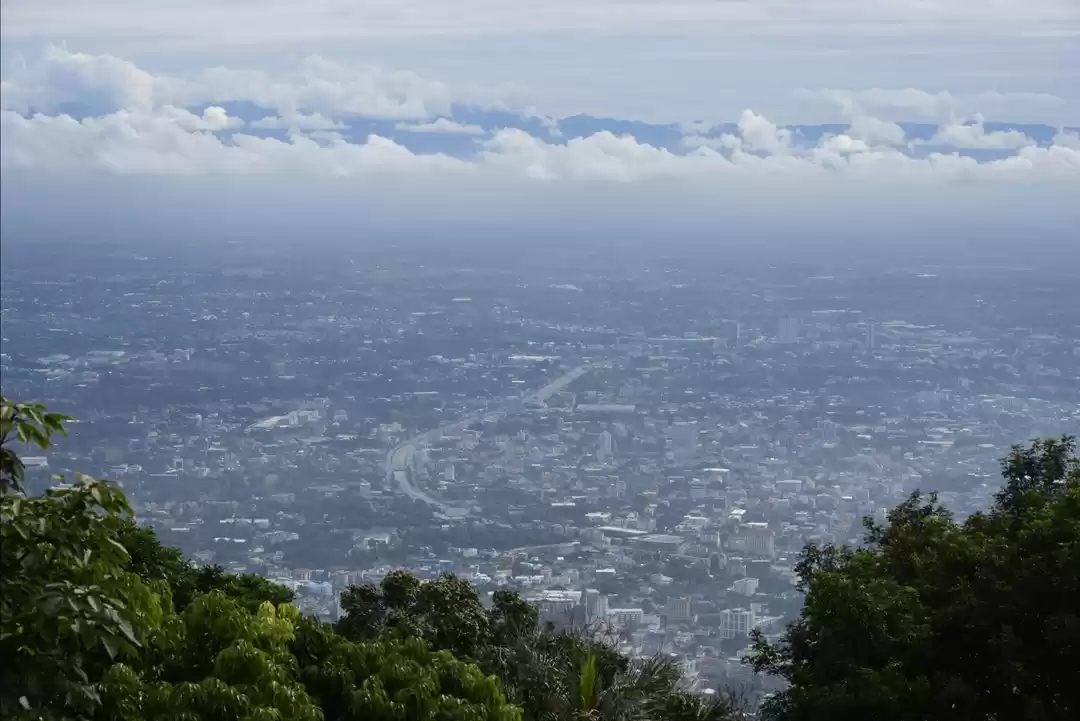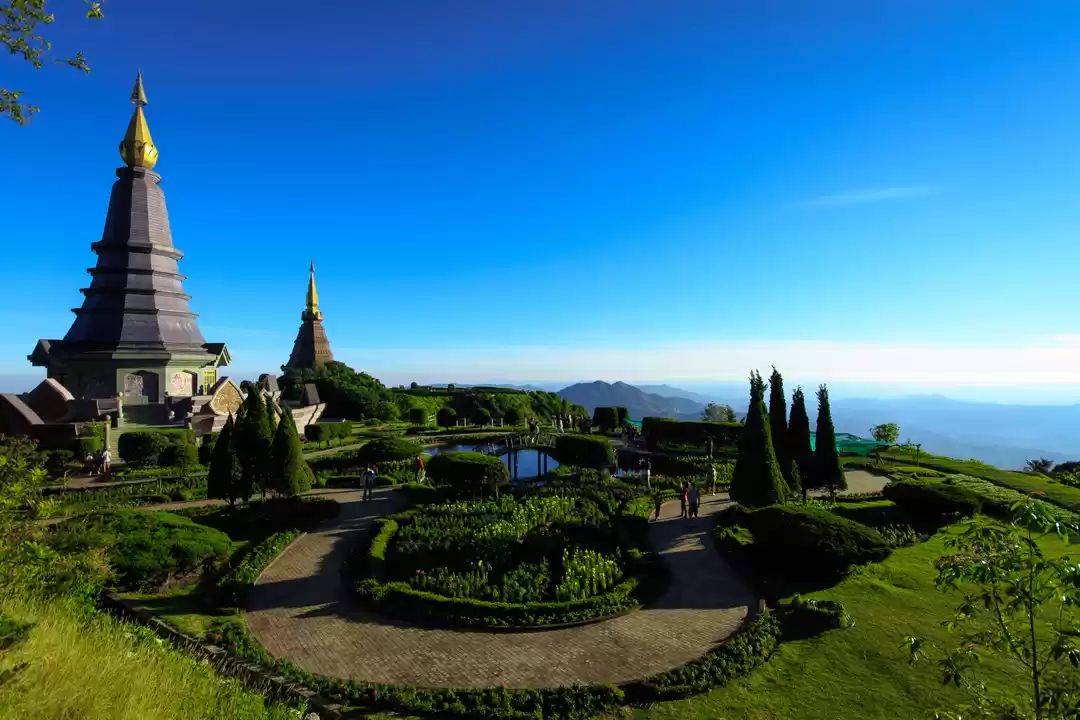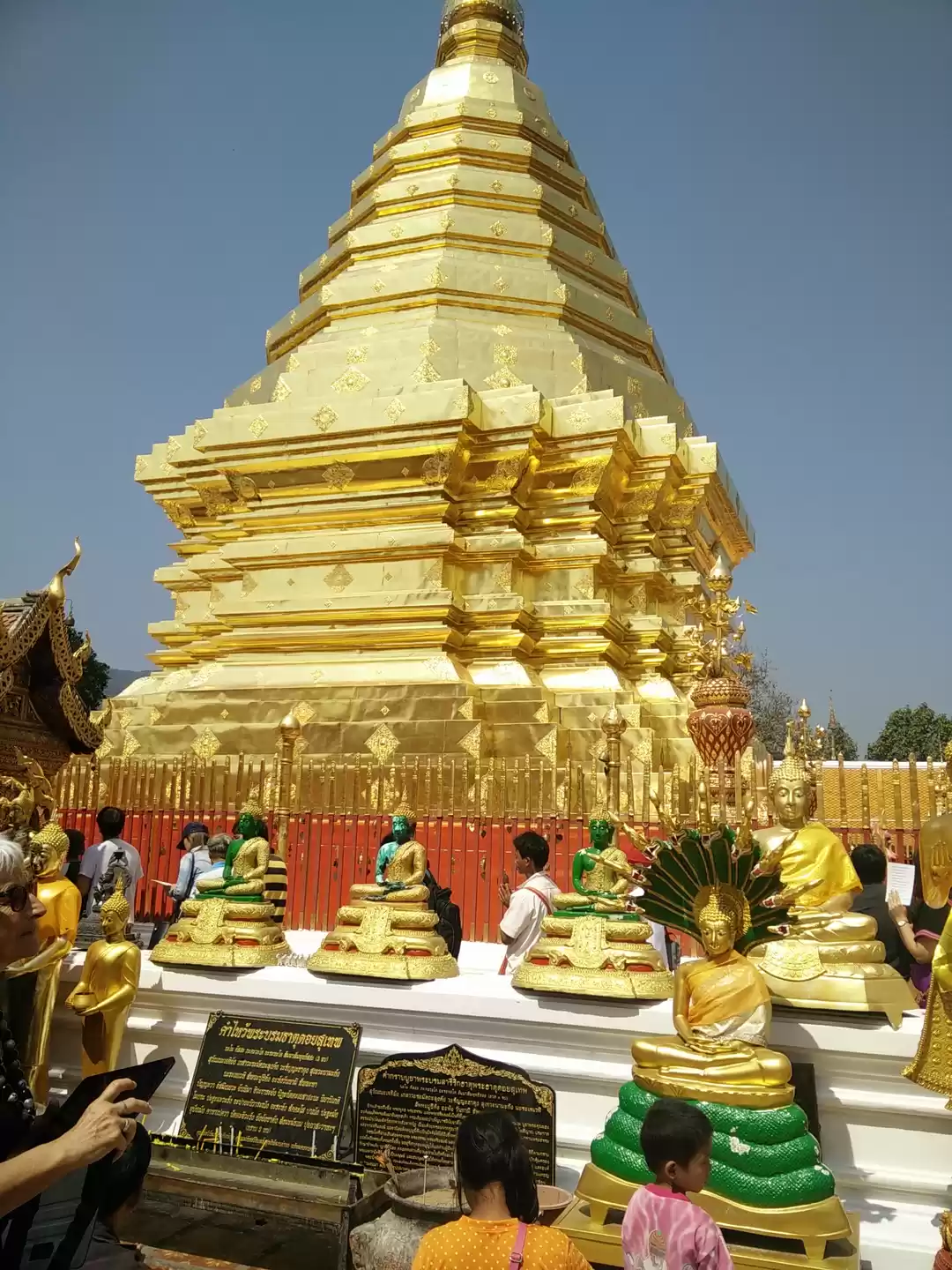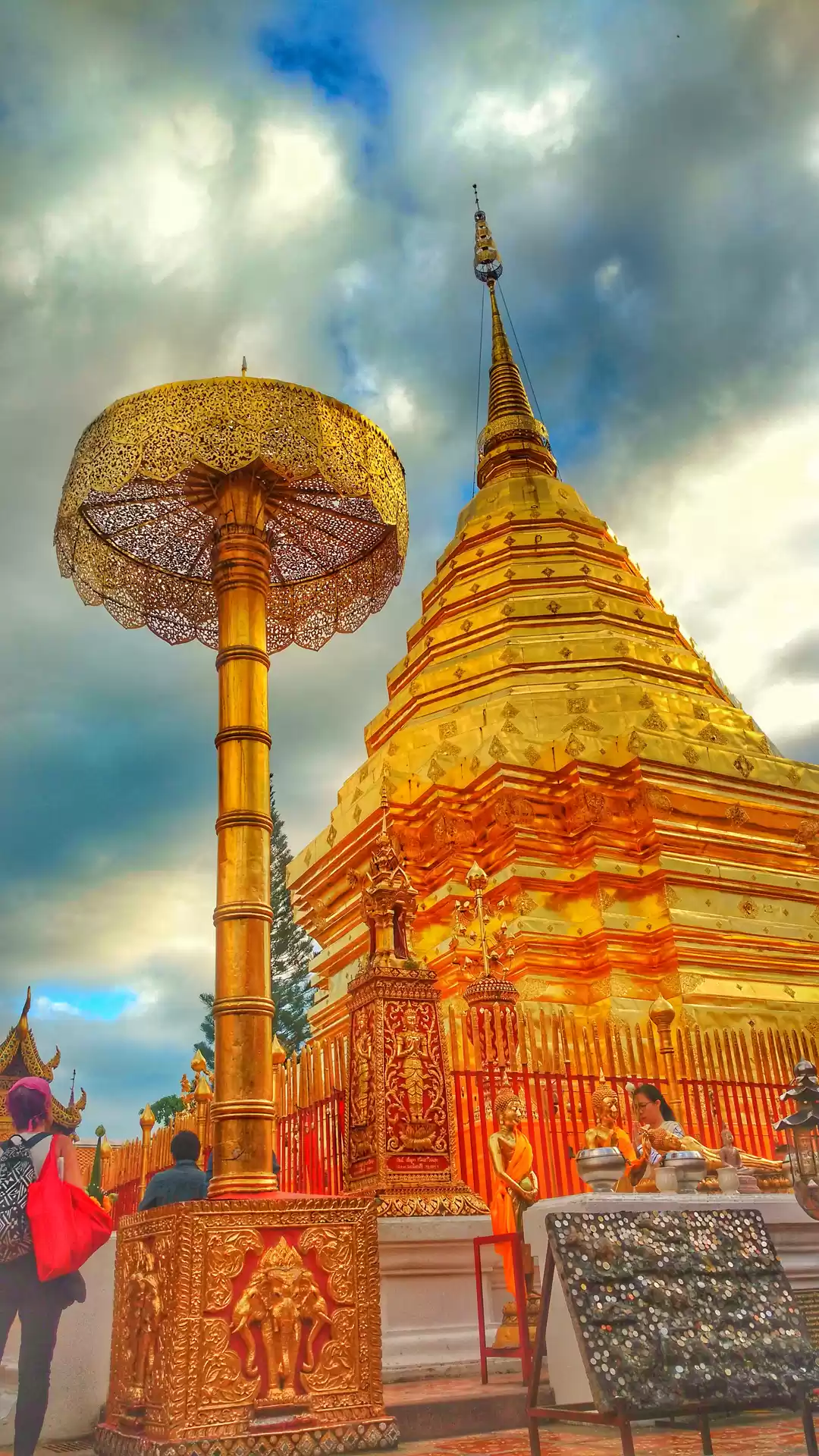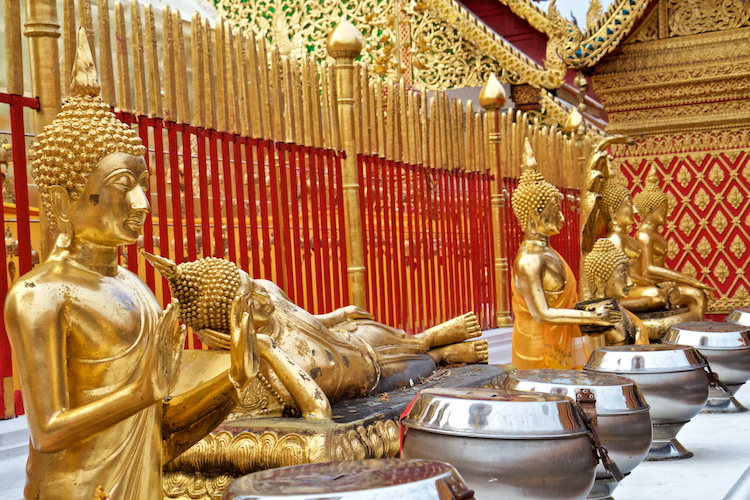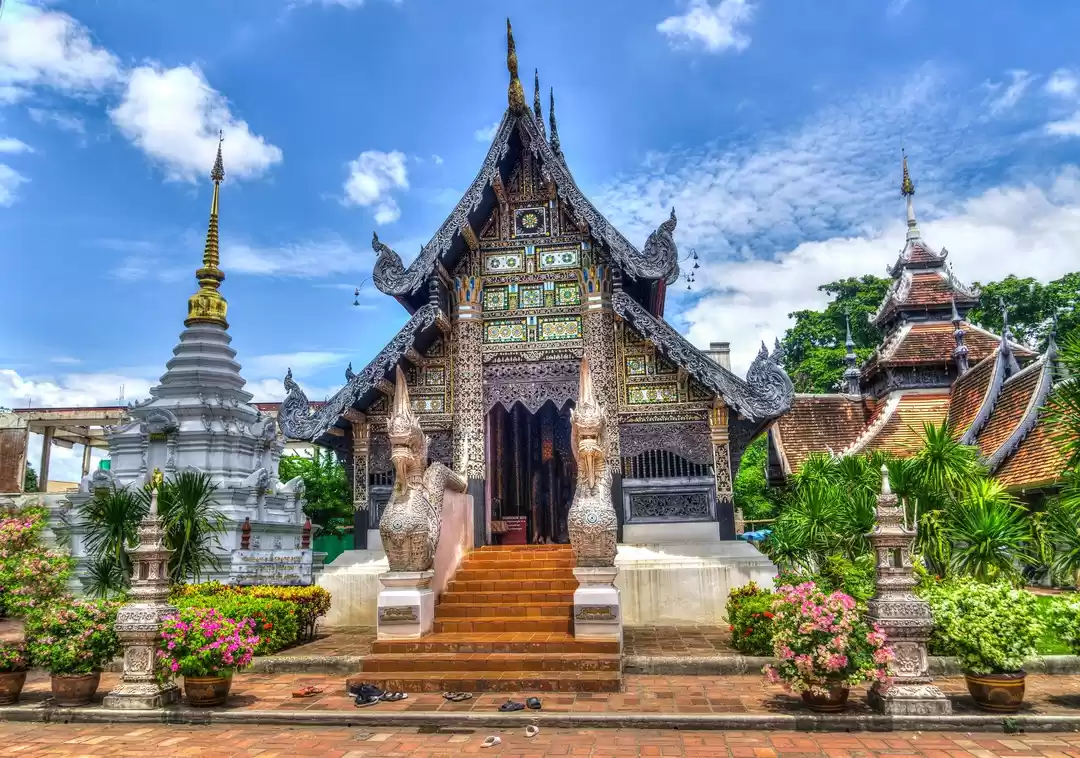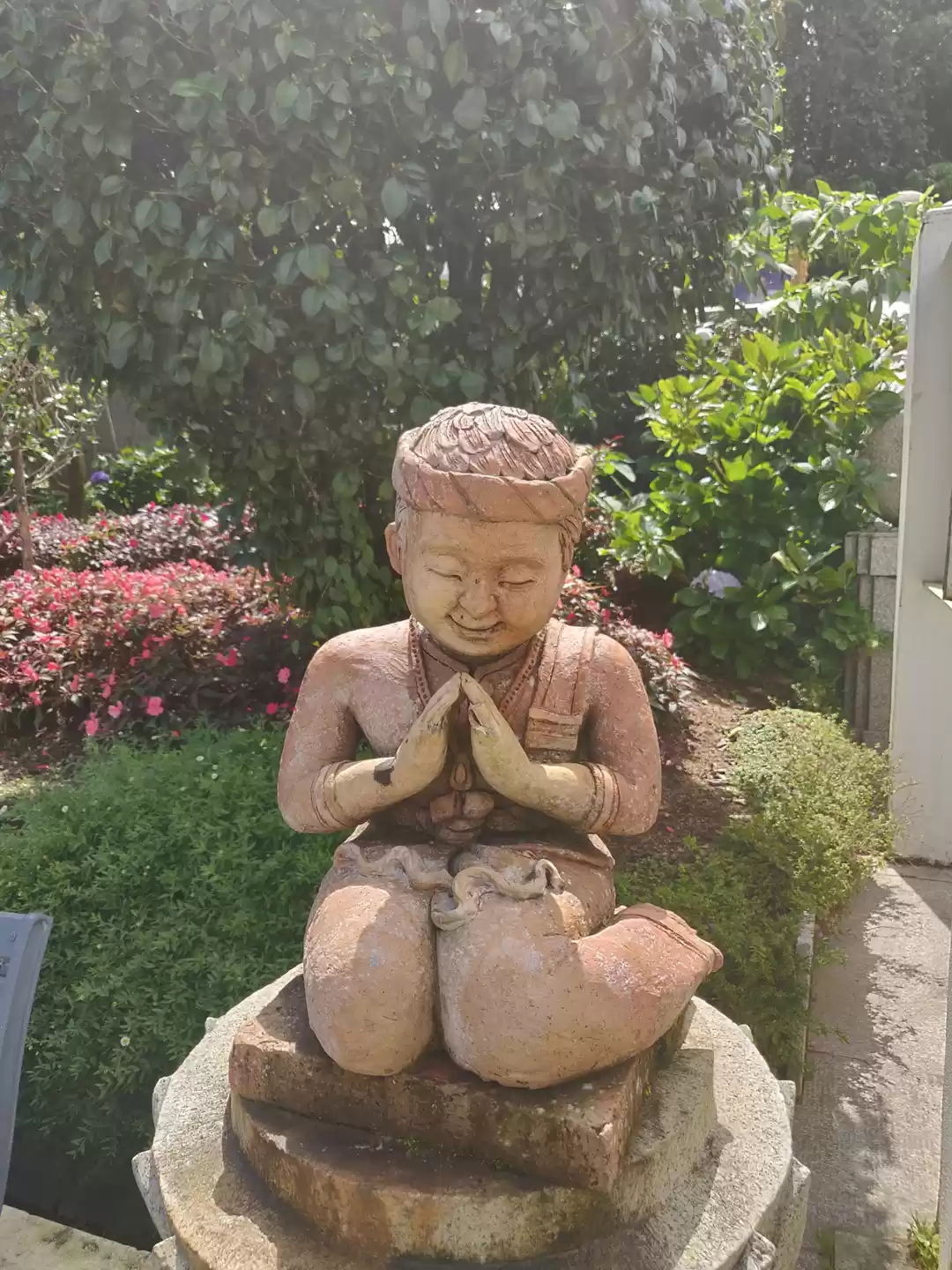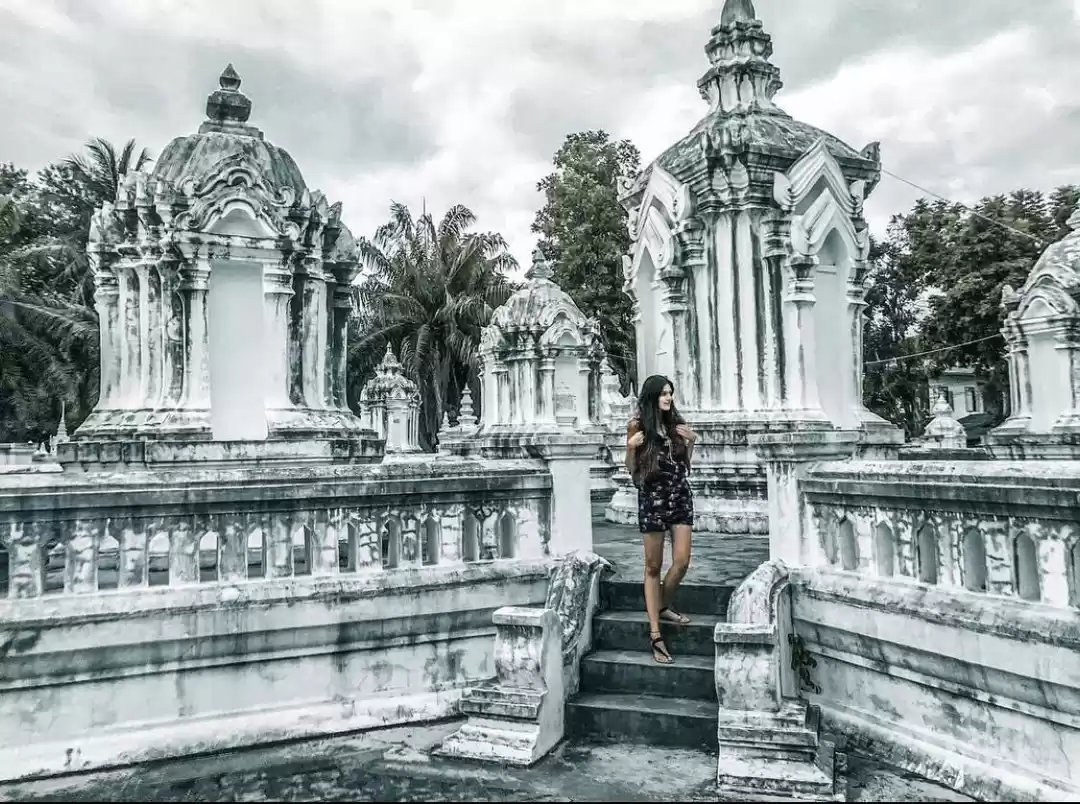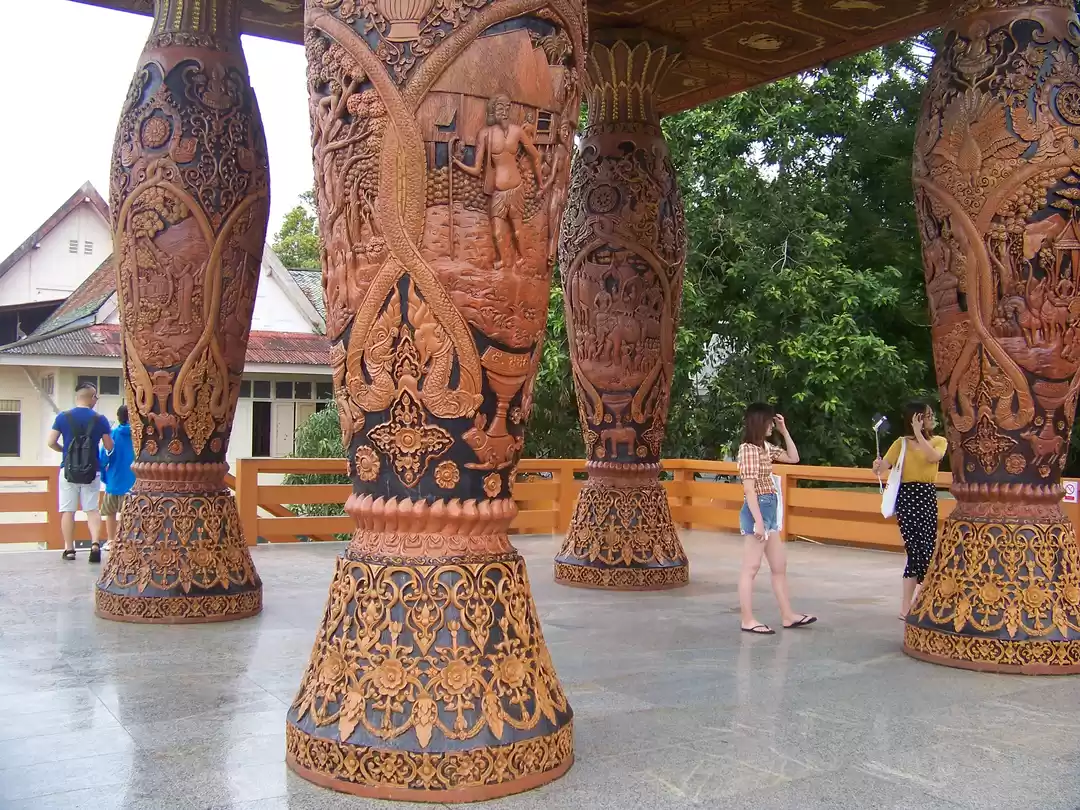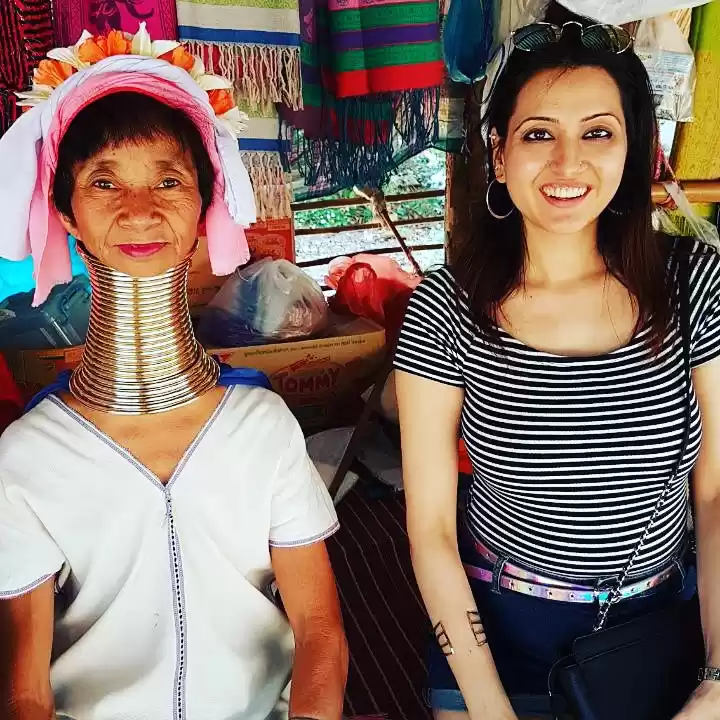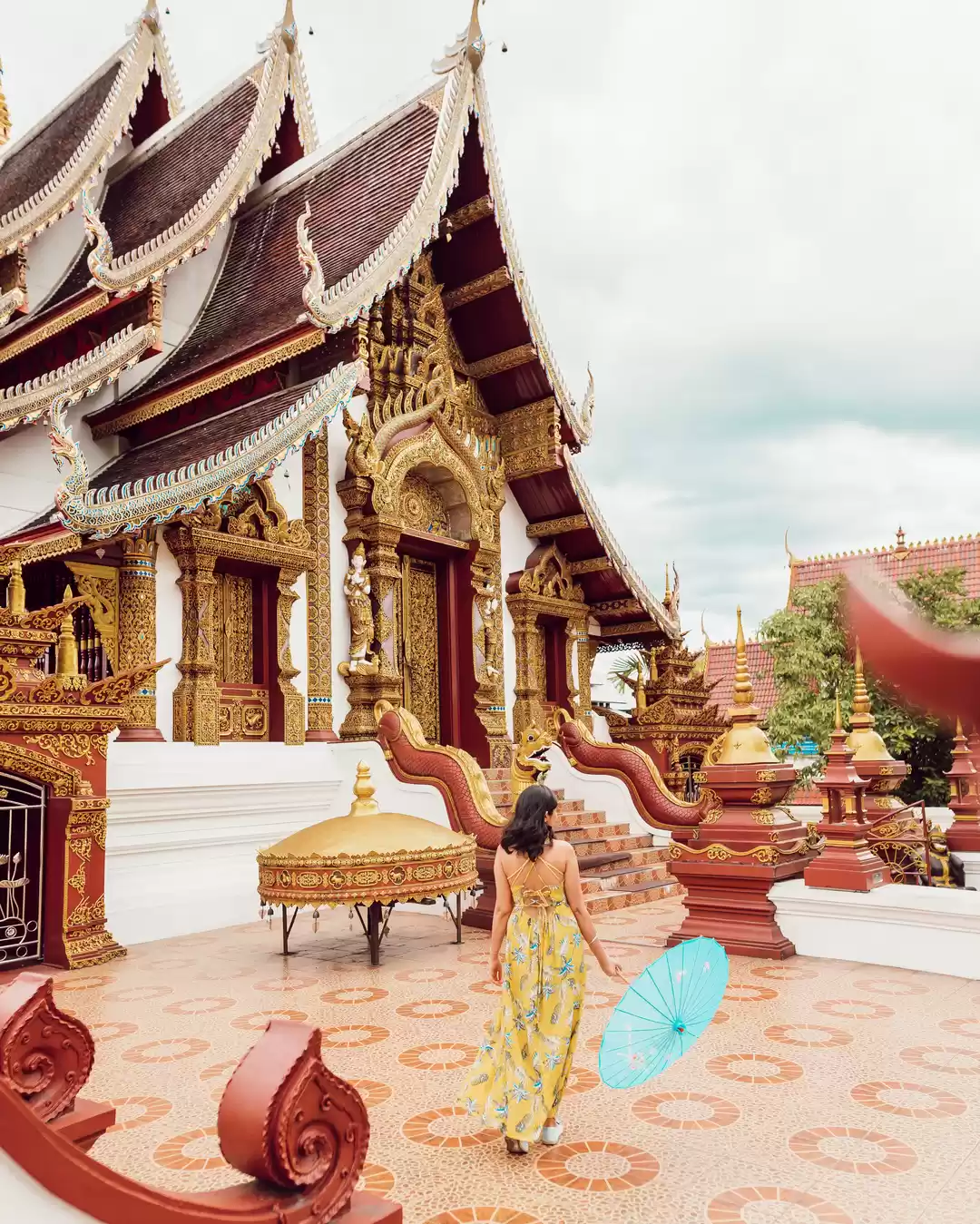Do you want to experience the spiritual and cultural richness of Thailand? Do you want to witness the stunning beauty and architecture of a temple that dates back to the 14th century? Do you want to enjoy the panoramic views of the city and the mountains from a high elevation? If you answered yes to any of these questions, then you should definitely visit Doi Suthep in Chiang Mai, Thailand.
Doi Suthep is the name of both the mountain and the temple that are located about 15 kilometers from the city center of Chiang Mai. The temple, officially known as Wat Phra That Doi Suthep, is one of the most sacred and revered sites in Thailand, attracting thousands of pilgrims and tourists every year. The temple is also a symbol of Chiang Mai, as it can be seen from almost anywhere in the city.
In this article, we will provide you with a complete guide to Doi Suthep in Chiang Mai, Thailand, covering its history, legend, features, attractions, transportation, accessibility, tips, and etiquette. By the end of this article, you will have all the information you need to plan your visit to this amazing place and make the most of your experience.
History and Legend of the Temple
The temple of Doi Suthep was founded in 1383 by King Keu Naone of the Lanna Kingdom, which ruled over northern Thailand at the time. According to legend, the king was given a relic of the Buddha by a monk from Sukhothai, the capital of another Thai kingdom. The relic was said to have miraculous powers, as it could multiply itself and glow in the dark.
The king decided to place the relic on the back of a white elephant and let it roam freely. The elephant eventually climbed up the mountain of Doi Suthep and stopped at a spot where it trumpeted three times before dying. The king took this as a sign from the heavens and ordered the construction of a temple at that spot.
The temple was expanded and renovated over the centuries by various kings and rulers, who added more buildings, statues, and decorations. The most prominent feature of the temple is the golden stupa, which is believed to contain the original relic of the Buddha. The stupa is surrounded by a terrace, where visitors can walk around and admire the views of the city and the countryside.
Features and Attractions of the Temple
The temple of Doi Suthep has many features and attractions that will captivate your eyes and your soul. Here are some of the highlights that you should not miss:

The Stairs: To reach the temple, you have to climb up 306 steps that are flanked by two giant nagas, or serpent-like creatures. The stairs are a symbol of the journey from the earthly realm to the heavenly realm, and also a test of your endurance and devotion. If you prefer, you can also take a cable car or an elevator to the top, but climbing the stairs is a more rewarding and authentic experience.
The Terrace: The terrace is the main area of the temple, where you can see the golden stupa, the Buddha images, the murals, the bells, the museum, and the viewpoint. The terrace is also where you can join the locals in their religious rituals, such as offering flowers, incense, and candles, or walking around the stupa three times in a clockwise direction while chanting prayers. The terrace is a place of peace and tranquility, where you can feel the spiritual energy and the reverence of the people.
The Stupa: The stupa, or chedi, is the centerpiece of the temple, and the most sacred object in the complex. The stupa is a conical structure that is covered with gold plates and topped with a multi-tiered umbrella. The stupa is said to contain the relic of the Buddha, which is hidden inside a chamber that is only accessible by monks. The stupa is a symbol of the enlightenment and the teachings of the Buddha, and also a representation of the cosmic mountain of Meru, the center of the universe in Buddhist cosmology.
The Buddha Images: The temple of Doi Suthep has many Buddha images, or statues, that depict the different aspects and postures of the Buddha. The most notable ones are the Emerald Buddha, which is a replica of the original one in Bangkok, the Reclining Buddha, which shows the Buddha in his final moments before passing away, and the Walking Buddha, which shows the Buddha in his first steps after attaining enlightenment. The Buddha images are revered and respected by the devotees, who often touch their feet or their heads as a sign of veneration.
The Murals: The temple of Doi Suthep has many murals, or paintings, that adorn the walls and the ceilings of the buildings. The murals depict the life and the stories of the Buddha, as well as the history and the culture of the Lanna Kingdom. The murals are colorful and intricate, and they reflect the artistic and religious traditions of the region. The murals are also a source of education and inspiration for the visitors, who can learn more about the Buddhist teachings and the local heritage.
The Bells: The temple of Doi Suthep has many bells, or gongs, that are hung around the terrace and the stupa. The bells are used to announce the time of the day, the start and the end of the ceremonies, and the arrival and the departure of the monks. The bells are also used by the visitors, who can ring them as a way of making merit, or generating good karma, for themselves and their loved ones. The bells produce a soothing and harmonious sound, that creates a serene and sacred atmosphere.
The Museum: The temple of Doi Suthep has a museum, or ho trai, that is located in a wooden building near the entrance of the terrace. The museum houses a collection of artifacts and relics that are related to the temple and the Buddhism, such as manuscripts, scriptures, sculptures, and utensils. The museum also displays the history and the development of the temple, as well as the biography and the portraits of the monks who have served there. The museum is a place of knowledge and appreciation, where you can gain a deeper understanding and respect for the temple and the Buddhism.
The Viewpoint: The temple of Doi Suthep has a viewpoint, or phra tamnak phu phing, that is located on the western side of the terrace. The viewpoint offers a spectacular view of the city of Chiang Mai and the surrounding mountains and valleys. The viewpoint is especially beautiful at sunrise and sunset, when the sky and the landscape are painted with different colors and shades. The viewpoint is also a place of relaxation and enjoyment, where you can take pictures, have a snack, or just sit and admire the scenery.
Transportation and Accessibility of the Temple
The temple of Doi Suthep is easily accessible from the city center of Chiang Mai, as there are several transportation options available for you. Here are some of the most common and convenient ways to get to the temple:

Driving:
If you have your own car or motorbike, or you rent one, you can drive to the temple by following the signs and the road that leads to the mountain. The drive takes about 30 to 45 minutes, depending on the traffic and the weather conditions. The road is paved and well-maintained, but it is also steep and winding, so you have to be careful and attentive. There is a parking lot at the base of the temple, where you can leave your vehicle for a small fee.
Taking a Songthaew:
A songthaew is a red pick-up truck that serves as a shared taxi in Chiang Mai. You can find a songthaew at the Huay Kaew Road, near the Chiang Mai Zoo, or at the Chang Phuak Gate, near the north gate of the old city. You can also hail a songthaew anywhere along the route, as long as there is space available. The songthaew will take you to the temple for a fixed price of 50 baht per person, or 300 baht for a round trip. The ride takes about 40 to 60 minutes, depending on the traffic and the number of stops. The songthaew will drop you off at the parking lot, where you can take the stairs or the cable car to the temple.
Hiking:
If you are feeling adventurous and fit, you can hike to the temple by following a trail that starts at the Chiang Mai Zoo. The trail is about 4 kilometers long, and it takes you through the forest and the wildlife of the Doi Suthep National Park. The hike takes about 2 to 3 hours, depending on your pace and your stamina. The trail is marked and easy to follow, but it is also steep and slippery, so you have to wear proper shoes and bring water and snacks. The trail ends at the back of the temple, where you can enter the terrace and enjoy the views.
Joining a Guided Tour:
If you want to have a hassle-free and informative experience, you can join a guided tour that will take you to the temple and other attractions in the area. You can book a tour online or through your hotel or a travel agency. The tour will include a comfortable and air-conditioned vehicle, a professional and friendly guide, and an entrance fee and a cable car ticket for the temple. The tour will also include a visit to the Doi Pui Hmong Village, a hill tribe community that lives near the temple, where you can learn about their culture, lifestyle, and handicrafts. The tour will last for about 4 to 5 hours, and it will cost you around 500 to 1000 baht per person, depending on the size and the quality of the group.
Tips and Etiquette for Visiting the Temple
The temple of Doi Suthep is a place of worship and respect, and you should follow some tips and etiquette when you visit it. Here are some of the most important ones:
Dress appropriately:
You should wear modest and respectful clothing that covers your shoulders and knees, as well as your shoes and socks. You should avoid wearing shorts, skirts, tank tops, or anything that is too revealing or offensive. You should also bring a scarf or a shawl to cover your head or your arms if needed.
Pay the admission fee:
You should pay the admission fee of 30 baht per person at the entrance of the terrace, where you will receive a ticket that you have to keep until you leave. The admission fee is used to maintain and preserve the temple and its surroundings. You should also pay an extra 20 baht per person if you want to take the cable car or the elevator to the top, instead of the stairs.
Respect the opening hours:
You should visit the temple during its opening hours, which are from 6 a.m. to 6 p.m. every day. You should also avoid visiting the temple during the Buddhist holidays, such as Vesak or Asalha Puja, when the temple is crowded with pilgrims and ceremonies. You should also check the weather forecast before you go, as the temple may be closed or inaccessible due to rain or fog.
Follow the rules and the customs:
You should follow the rules and the customs of the temple, such as taking off your shoes and hats before entering the buildings, bowing and kneeling before the Buddha images, not touching or pointing at the statues or the murals, not taking pictures or videos inside the stupa or the museum, not making loud noises or disturbing the monks or the worshippers, and not smoking or drinking alcohol in the premises. You should also follow the direction of the signs and the staff, and ask for permission before doing anything that may be inappropriate or disrespectful.
Make merit and donations:
You can make merit and donations at the temple, which are considered as good deeds that will bring you happiness and blessings in this life and the next. You can make merit by offering flowers, incense, candles, or food to the Buddha or the monks, or by ringing the bells or walking around the stupa. You can also make donations by putting money in the donation boxes or by buying souvenirs or handicrafts from the shops or the stalls. The merit and the donations will help support the temple and the community, as well as show your gratitude and appreciation for the place.
The temple of Doi Suthep in Chiang Mai, Thailand, is a must-see attraction for anyone who wants to experience the spiritual and cultural richness of the Land of Smiles. The temple is not only a stunning and sacred site, but also a place of history, legend, art, and nature. The temple will offer you a memorable and rewarding experience, that will enrich your mind and your soul.
If you are interested in visiting the temple of Doi Suthep, you can book your trip with Tripoto, the leading online travel platform that connects travelers with local experts and guides. Tripoto will help you plan your itinerary, find the best deals, and enjoy the best services.
Tripoto will also provide you with more information and tips on the temple and other attractions in Chiang Mai and Thailand. Visit Tripoto.com today and start your journey to Doi Suthep.

















